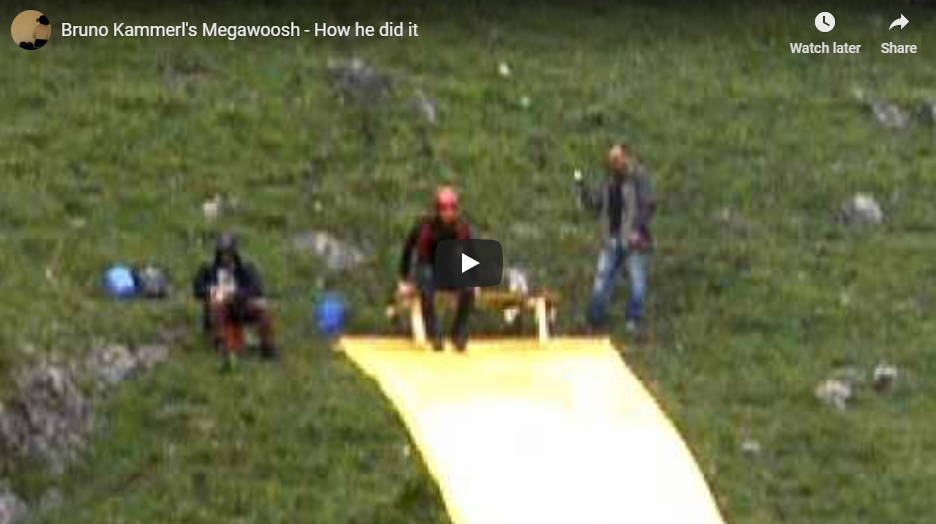The Amazing Water Slide: How it was done
German engineer Bruno Kammerl, created the human projectile video clip that accumulated more than 1.4 million views worldwide. As luck would have it, I was in Europe when this hit the internet and other news media, and thought this was another "CoolStuff" opportunity. Those that are internet savvy can tell you, that this clip sparked science discussions all over the world. Was it real or was it fake? That was the question that brought science educators once again to the fore front.
This video was a carefully crafted viral ad for Microsoft's Office Project 2007 in Germany. Kammerl had come up with a special type of neoprene material called "Softslide" and he described it as "almost frictionless" on his website. He then came upon a sponsor who financially helped him achieve his goal of the longest and most exciting waterslide in the world. The creation and testing of this slide in the German Alps lead to the production of the video. Of course it's all fake; the result of careful editing and creative video production.
From Janko Roettgers Blog 8-11-2009:
Kammerl's web site was registered in May by an employee of the German subsidiary of marketing giant MRM Worldwide. Chatter about this connection popped up online only a few days after the waterslide video started to become popular, and MRM Worldwide quickly decided to lift the curtain. Microsoft's logo was added to Kammerl's Megawoosh.com web site late last week, and MRM Germany CEO Alexander Ewig finally fessed up to his company's involvement in a press release emailed to us today, saying: "We developed Megaswoosh as a viral campaign for Microsoft Germany."
"This revelation was supposed to come a little later," I was told by Maik Koenigs, whose Hamburg-based viral marketing agency Elbkind was hired by MRM to seed the video onto more than 60 sites. However, bloggers were too quick to make the connection, so there had to be a change of plans. "Viral communication is a dynamic process," he explained, adding that the outcome was still beyond everyone's expectations. The campaign was just meant to be for a German audience, but has gotten Twitter, blog and mainstream media responses from all over the world.
So how was the video really done? As some bloggers guessed, it's a case of creative compositing, meaning that the clip we get to see is based on multiple elements that were combined together to create a final video. A stuntman slides down the slide, secured by a rope. Then there's a body flying through the air, which is animated. And finally, the big splash. "He actually jumped from a wooden ramp into the pool," explained Koenigs. Of course, you don't get to see any of this in the final clip, thanks to careful editing that makes it look like a single take.
Here's a short, unedited clip that shows how the stuntman filling in for Kammerl is sliding down part of the slide for a first segment of the final video:
So yes, it was fake. As is so much of the world students are exposed to these days. However, they are entertaining, fun and sometimes baffling. But what a great opportunity for discussion. When something like this comes along, questions, theories and hypothesis's begin to flow.
Engage, Explain and Expand…


